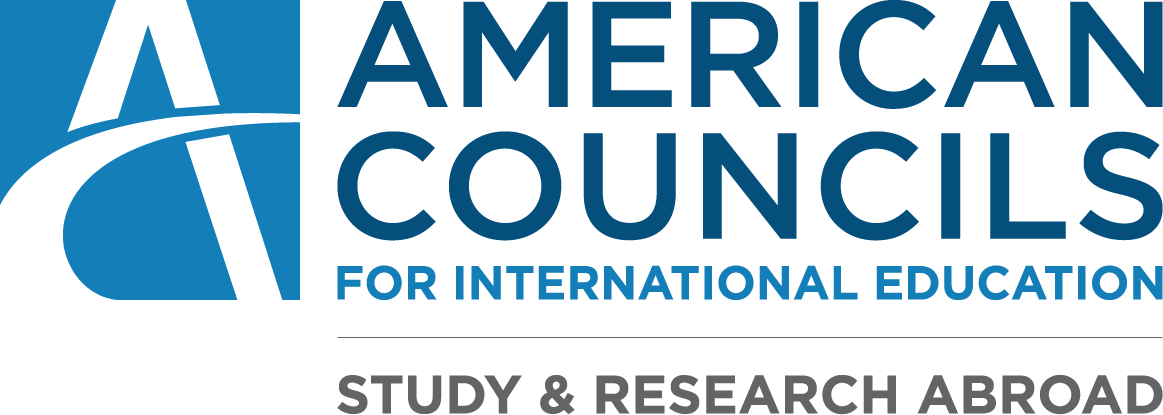Fulbright-Hays Scholarship Recipient Profile: Sean Heyneman
Sean Heyneman reflects on his semester on the Eurasian Regional Language Program in Dushanbe as a Fulbright-Hays Group Projects Abroad scholarship recipient. This story was originally shared on April 1, 2019.
Learning a language is your ferry across the sea of human understanding. Don’t miss it. – Rumi
In Fall 2018, I had the distinct pleasure to take part in the Eurasian Regional Language Program in Dushanbe, Tajikistan, where I studied Farsi, Tajiki, and Uzbek. My time in ERLP was a uniquely memorable and rewarding experience. Through challenging daily one-on-one and small group classes with patient and attentive teachers and a constantly immersive environment outside of class, I was able to improve my spoken and written Persian from near-zero to near-fluency in less than four months. While our group had diverse learning styles, personalities, and motivations for studying Persian, we quickly became good friends and traveling companions throughout Tajikistan. Living with Tajik host families not only gave us meaningful insight into daily life of many people in Central Asia and the greater Iranian world, but also granted us lifelong friends in our host moms, dads, brothers, and sisters. Pre-arranged and self-planned excursions took us to interesting landmarks, cultural events, and parties in Dushanbe and throughout the country.
Qurutob, the pride and “national dish,” of the Tajiks. Layered unleavened bread and sour yogurt, tender stewed lamb, fresh greens, onion, and hot peppers, served in a shallow wooden bowl. Qurutob comes in many regional varieties.
Persian (known as Farsi in Iran, Dari in Afghanistan, and Tajiki in Tajikistan) is considered a critical language for U.S. national security and highly sought after by the American foreign policy, security, and intelligence communities. With relations between the West and Iran fraught with tension and mutual suspicion, Afghanistan gingerly reaching toward peace after decades of violence, and Tajikistan balancing the interests of powerful neighbors, the global importance of the Persian language will likely continue to grow. While Persian varies significantly by country and region, learning even one form of the language allows passable communication with nearly 100 million Iranians, Afghans, Tajiks, Persian-speaking national minorities, and diaspora communities worldwide. Persian is the heir to a spectacular literary tradition in the works of poets, philosophers, scientists, historians, and mystics renowned as an integral part of the common cultural heritage of humanity.
I had long had an interest in learning Persian for a career in the Foreign Service but had no opportunity to study it alongside the demands of my master’s program. ERLP allowed me to take a deep dive into the language in a country where it is spoken, one of the most conducive environments possible for doing so. I would heartily recommend this program to anyone considering it.
Parting with a new friend. Bidev village, Yaghnob Valley, Sughd Province, Tajikistan. This isolated valley is home to the Yaghnobi people, the last linguistic descendants of the ancient Sogdians who once controlled the Silk Road trade and ruled the great cities of Central Asia in wealth and splendor.
Looking down on the city of Khorugh, with Afghanistan in the background. Khorugh is the regional capital of Gorno-Badakhshan Autonomous Province and a political, economic, and cultural center for Pamiri people. Institutions funded by the Aga-Khan Development Network employ and provide services for many residents of the city and region. The Aga-Khan is the spiritual leader of the global Shia Ismaili Muslim community, adherents of which include most Pamiris.
About Fulbright-Hays Scholarships from American Councils
American Councils for International Education has received a grant from the U.S. Department of Education, Fulbright-Hays Group Projects Abroad, to provide scholarships for advanced overseas Russian and Persian language study. Learn more about the eligibility requirements here.
About Fulbright-Hays Group Projects Abroad
The Mutual Educational and Cultural Exchange Act, commonly referred to as the Fulbright-Hays Act, was made law by the 87th U.S. Congress under President John F. Kennedy on September 21, 1961. Senator J. William Fulbright and Representative Wayne Hays introduced the legislation, which represents the basic charter for U.S. government-sponsored educational and cultural exchange. 2016 marks the 55th anniversary of this landmark legislation. More information about Fulbright-Hays Group Projects Abroad can be found here.
By: Sean Heyneman
Program: Eurasian Regional Language Program
Term: Fall 2018




